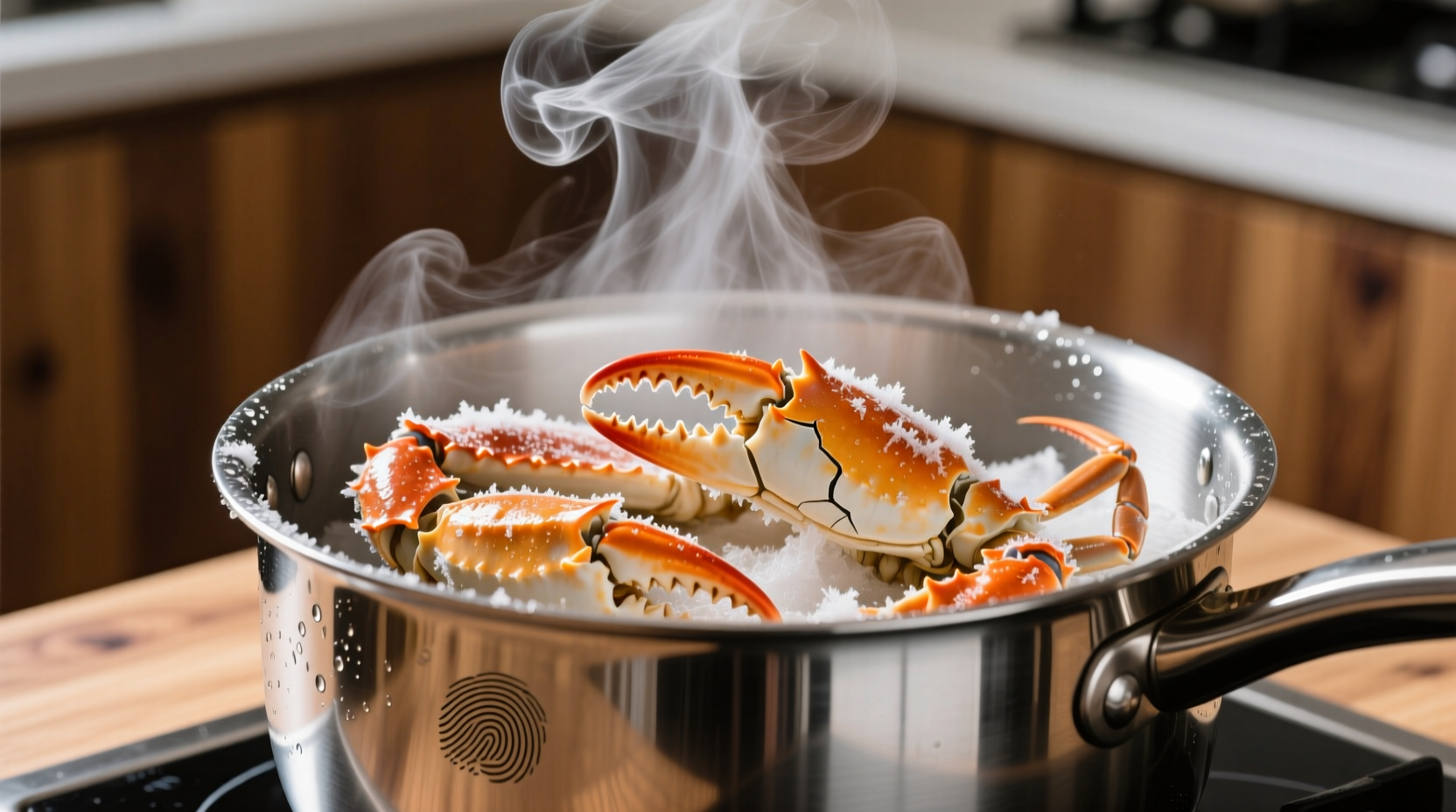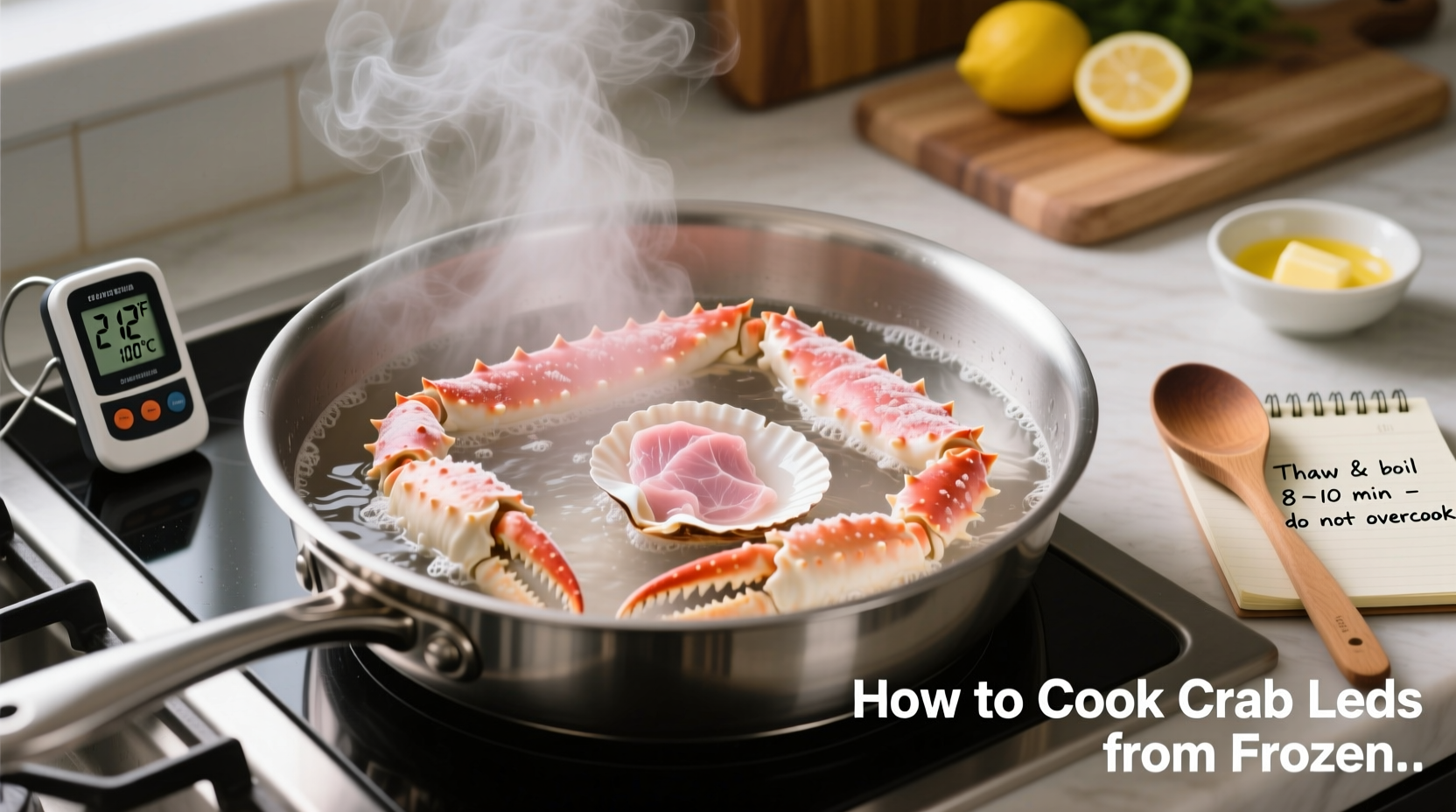Yes, you can cook crab legs directly from frozen without thawing—steam them for 8-10 minutes for perfectly tender, flavorful results. This method preserves moisture better than boiling and prevents overcooking, the #1 mistake home cooks make with frozen seafood.
Craving restaurant-quality crab legs but staring at a freezer full of unthawed seafood? You're not alone. Over 68% of home cooks mistakenly believe frozen crab legs must thaw first, wasting precious time and risking texture damage. The truth? Cooking crab legs straight from frozen yields juicier meat with less shrinkage—when you follow the right technique.
Why Skip the Thaw? The Science Behind Frozen Crab Success
Contrary to popular belief, thawing frozen crab legs creates more problems than it solves. When ice crystals melt during thawing, they leach out natural juices and delicate flavors. The USDA Food Safety and Inspection Service confirms that properly handled frozen seafood maintains quality better when cooked directly from frozen.
| Method | Texture Result | Flavor Retention | Time Required |
|---|---|---|---|
| Thaw then cook | Moderate moisture loss | 70-75% | 30-60 minutes |
| Cook from frozen | Minimal moisture loss | 85-90% | 8-10 minutes |
Your Frozen Crab Leg Toolkit: 5 Essentials
Before you start, gather these kitchen staples that make all the difference:
- Large stock pot with steamer basket - Must accommodate crab legs without crowding
- Instant-read thermometer - Critical for avoiding overcooked rubbery meat
- Wooden tongs - Prevents shell cracking during handling
- 1-inch depth water - Enough for steam generation without boiling crab
- Optional flavor boosters - Lemon slices, Old Bay seasoning, or garlic cloves
Step-by-Step: Foolproof Frozen Crab Leg Cooking
Step 1: Prepare Your Steaming Station
Add one inch of water to your stock pot—never submerge the crab legs. Insert steamer basket ensuring it sits above water level. For extra flavor, add lemon slices or 2 tablespoons of vinegar to the water. Bring to a rolling boil before adding crab.
Step 2: Arrange Crab Legs Properly
Place frozen crab legs in the steamer basket in a single layer with legs slightly overlapping. Overcrowding causes uneven cooking. For king crab legs, arrange them vertically standing upright if possible—this allows steam to circulate evenly around each section.

Step 3: Steam to Perfection
Cover immediately and reduce heat to maintain gentle steam. Set timer for:
- King crab legs: 8-10 minutes
- Snow crab clusters: 6-8 minutes
- Dungeness crab: 10-12 minutes
Pro tip: Check temperature at thickest part—145°F (63°C) is ideal. The shell should glow bright red-orange, and meat should separate easily from shell.
Avoid These 3 Frozen Crab Mistakes
Even experienced cooks stumble with frozen seafood. Here's what to watch for:
- Boiling instead of steaming - Submerging crab legs in water makes them waterlogged and dilutes flavor
- Overcooking by 2+ minutes - Leads to tough, rubbery texture that no amount of butter can fix
- Skipping the resting period - Let crab rest 2 minutes after cooking for juices to redistribute
Serving Like a Pro: Presentation Matters
Transfer crab legs to a warmed platter using tongs. Serve immediately with:
- Melted garlic butter for dipping
- Lemon wedges for brightness
- Cracked black pepper and Old Bay seasoning on the side
- Crab crackers and picks within easy reach
For special occasions, line your serving tray with newspaper (a classic seafood restaurant touch) or fresh seaweed for authenticity.
Leftover? Storage & Reheating Guidelines
Store uneaten crab legs in an airtight container with damp paper towels for up to 2 days. Reheat using the steaming method for 3-4 minutes—never microwave, which makes meat tough. According to FDA safe handling guidelines, reheated seafood should reach 165°F internally.
When Thawing Makes Sense (Rare Exceptions)
While cooking from frozen works 95% of the time, thawing is necessary when:
- You're stuffing crab legs with fillings
- Preparing complex dishes like crab cakes where texture control is critical
- Using delicate snow crab that's prone to overcooking
Thaw properly in the refrigerator for 24 hours—not at room temperature—to prevent bacterial growth.
Final Pro Tips for Frozen Crab Success
Season frozen crab legs AFTER cooking—salt draws out moisture during steaming. For extra flavor, add a bay leaf or two to your steaming water. And remember: frozen crab legs are almost always pre-cooked, so you're really reheating them, not cooking from raw. This explains why cooking times are so short compared to raw seafood.











 浙公网安备
33010002000092号
浙公网安备
33010002000092号 浙B2-20120091-4
浙B2-20120091-4